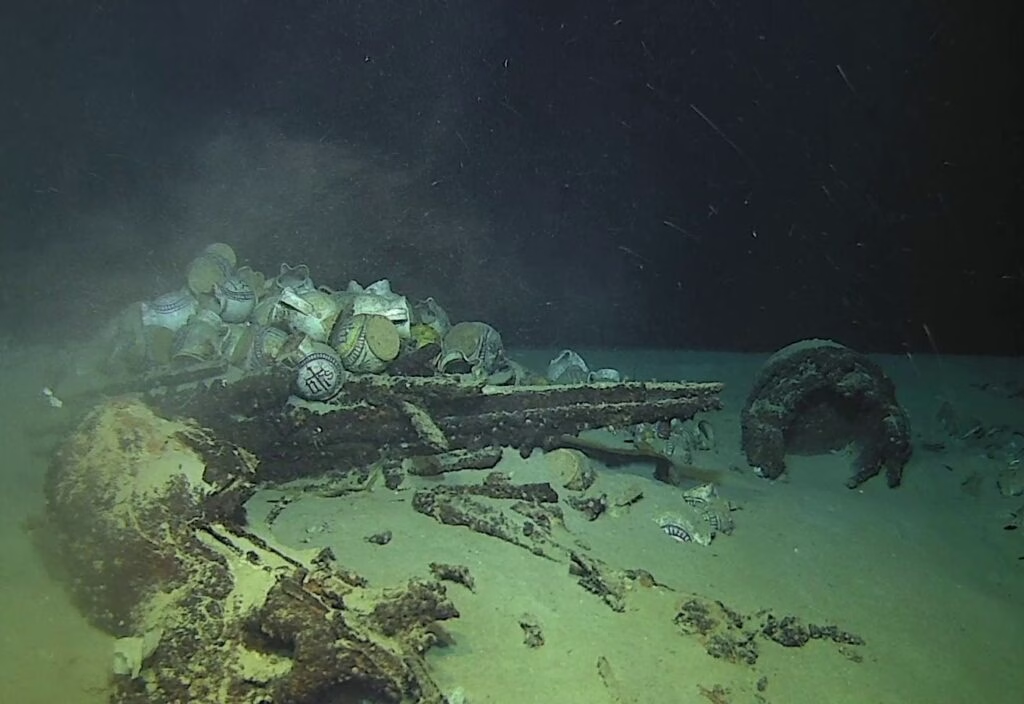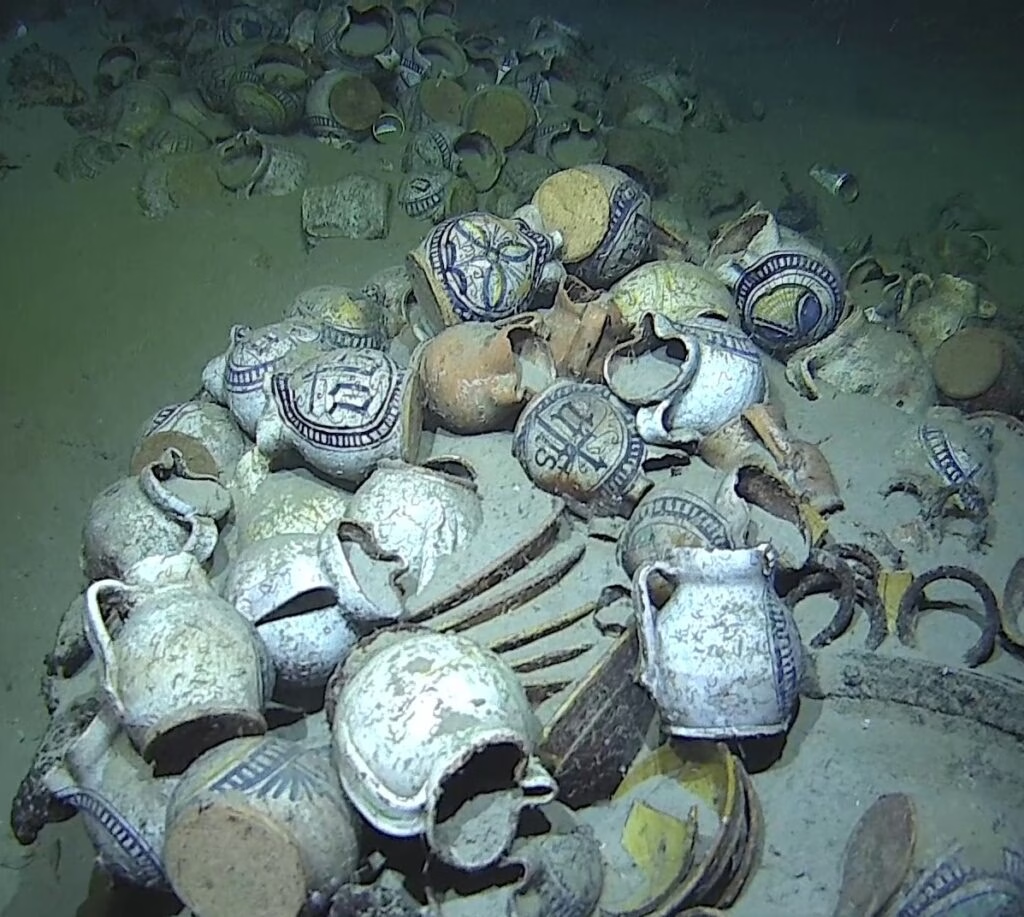An extraordinary underwater discovery sheds light on Renaissance-era maritime trade — a perfectly preserved 16th-century shipwreck found deeper than any previously recorded in France’s territorial seas.
In a groundbreaking deep-sea expedition, the French Navy’s CEPHISMER unit uncovered a 16th-century merchant shipwreck off the coast of Ramatuelle (Var, Provence) on March 4, 2025. Resting 2,500 meters below the surface, this is officially the deepest shipwreck ever recorded in French territorial waters.
The “Camarat 4” – A Renaissance-Era Time Capsule
Measuring approximately 30 meters in length and 7 meters in width, the vessel — now dubbed “Camarat 4” — has been astonishingly well-preserved. Inside, researchers found nearly 200 multicolored ceramic flagons, most still embedded in seabed sediment. These round-bodied jugs feature ribbon handles and mouth openings sealed over time, adorned with Ligurian-style decorations ranging from geometric patterns to Christogram “IHS” symbols.

Additionally, the ship held around 100 decorative plates believed to be of the same Ligurian origin. Anchors, bronze cannons, and cooking cauldrons were also identified, offering a rare glimpse into the daily life aboard a Renaissance trading vessel.
A Scientific Goldmine Beneath the Sea
According to France’s Department of Underwater Archaeology (Drassm), this find represents the deepest-known underwater cultural heritage site within French jurisdiction. Its remote depth has helped shield the wreck from decay and looters, leaving behind a nearly untouched maritime time capsule.

Multidisciplinary research is already being planned, involving experts in marine architecture, artillery, ceramics, and conservation science. Full photogrammetric mapping, targeted artifact recovery, and advanced lab analysis are all on the agenda.
A Message Beneath the Waves: Preserve the Depths
Despite its extreme depth, the site was not immune to pollution — traces of microplastics and larger debris were found near the wreck. This alarming detail highlights the growing urgency for marine conservation and awareness of ocean pollution, even in the most remote and protected areas.
Cover Image Credit: Drassm – Marine Nationale





